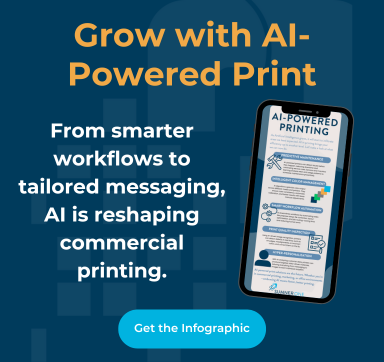
Remember the days of dot matrix printers with their slow, noisy, and often unreliable performance? Printing technology has evolved a long way since then, leading us to the modern inkjet printer. Thanks to their efficiency, quality, and versatility, inkjet printers have become indispensable tools for many organizations—whether in business, education, or government. Keep reading to learn exactly what inkjet printers are and what makes them valuable to organizations of all types.
What is Inkjet Technology?
Inkjet technology involves the precise ejection of tiny ink droplets onto paper to form text and images. This method contrasts with older printing technologies that relied on mechanical impact or heat to transfer ink.
The innovation behind inkjet technology lies in its ability to produce high-resolution prints quickly and quietly. This makes inkjet an excellent option for users in different settings.
What is an Inkjet Printer?
An inkjet printer is a device that utilizes inkjet technology to print documents and images. These printers are known for producing high-resolution prints with excellent color accuracy.
They come in various sizes and capacities, catering to different needs—from compact models suitable for small offices to large-format printers designed for high-volume environments. In addition to standard printing tasks, many inkjet printers offer other related functionalities such as scanning, copying, and faxing, making them versatile tools for modern workplaces.
How Does an Inkjet Printer Work?
If you’ve ever wondered, “how does an inkjet printer work,” here’s a simplified breakdown of its parts and how they work together:
- Ink Cartridges
The heart of an inkjet printer lies in its ink cartridges. These contain liquid ink, typically in four colors: cyan, magenta, yellow, and black (CMYK). Some advanced models may use additional colors for even higher-quality prints.
- Print Head
The print head, which houses numerous tiny nozzles, sprays ink onto the paper. As the print head moves back and forth across the paper, it ejects microscopic droplets of ink in precise patterns to form text and images.
- Droplet Ejection
Different methods can be used to eject ink droplets, such as thermal (heat) or piezoelectric (mechanical pressure). Thermal inkjet printers use heat to create bubbles that push the ink out of the nozzles, while piezoelectric printers use a crystal that changes shape when an electric charge is applied, forcing the ink out.
- Paper Feed Mechanism
The paper feed mechanism ensures that paper is fed into the printer smoothly and in sync with the print head’s movement. This coordination is crucial for maintaining print quality and avoiding paper jams.
- Control System
The printer's control system manages the entire process, from receiving print commands from a computer to coordinating the movement of the printhead and paper feed. Advanced printers also include sensors and software that adjust print settings automatically to optimize output quality.
Benefits of Inkjet Printers
Inkjet printers offer a lot of benefits to all types of organizations—businesses, schools, government offices, and many others—such as:
- High-Quality Output
Inkjet printers produce excellent print quality, especially for color images and detailed graphics. This makes them ideal for creating marketing materials, reports, and presentations.
- Cost-Effective
Unlike laser printers, inkjet printers are often more affordable upfront and cost-effective in the long run, especially for organizations with moderate printing needs.
- Versatility
Inkjet printers can handle various media types, including standard paper, glossy photo paper, labels, and even some fabrics. This flexibility is particularly useful for organizations that need to print diverse materials.
- Ease of Use
Modern inkjet printers are very user-friendly, with straightforward setup and operation. They also often come with wireless connectivity, enabling easy printing from multiple devices.
- Ink Cartridges
The heart of an inkjet printer lies in its ink cartridges. These contain liquid ink, typically in four colors: cyan, magenta, yellow, and black (CMYK). Some advanced models may use additional colors for even higher-quality prints.
- Environmental Considerations
Last but not least, many inkjet printers consume less energy than laser printers. In addition, some inkjet models offer eco-friendly options, such as refillable ink tanks, which help reduce waste and lower costs associated with disposable cartridges.
For organizations looking to upgrade or expand their printing capabilities, SumnerOne offers a wide range of inkjet printers suited to various needs. With expert advice and tailored solutions, they can help ensure you find the right printer to meet your specific requirements.
Book a free print assessment for unbiased advice on what inkjet printers are best for your needs, and how you can improve efficiency and lower costs with the right print technology.
 FREE EBOOK DOWNLOAD
FREE EBOOK DOWNLOAD
















